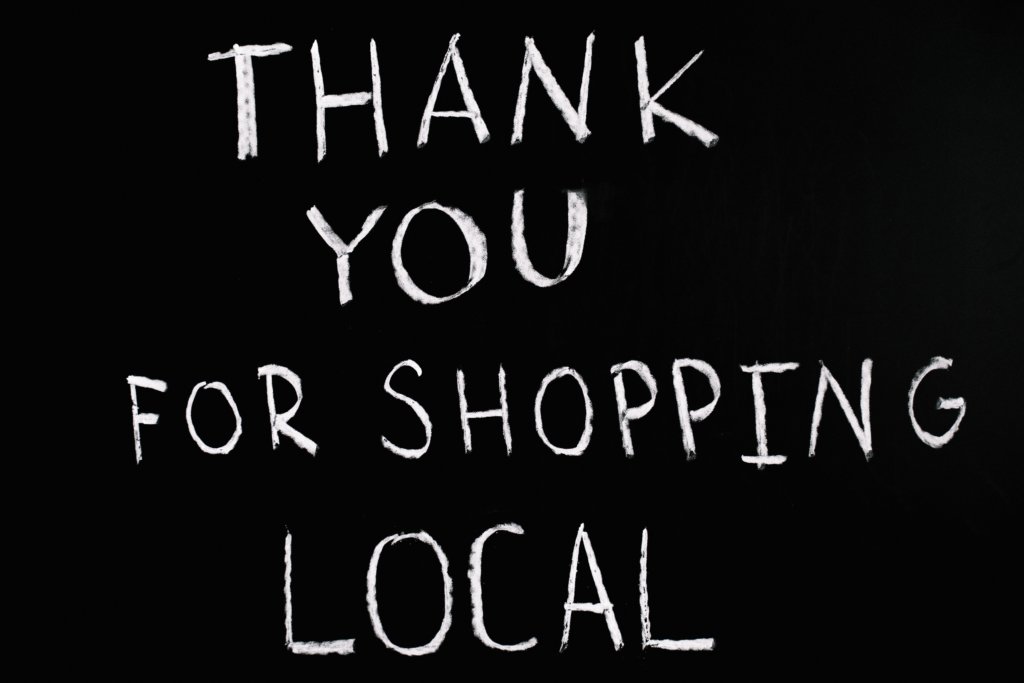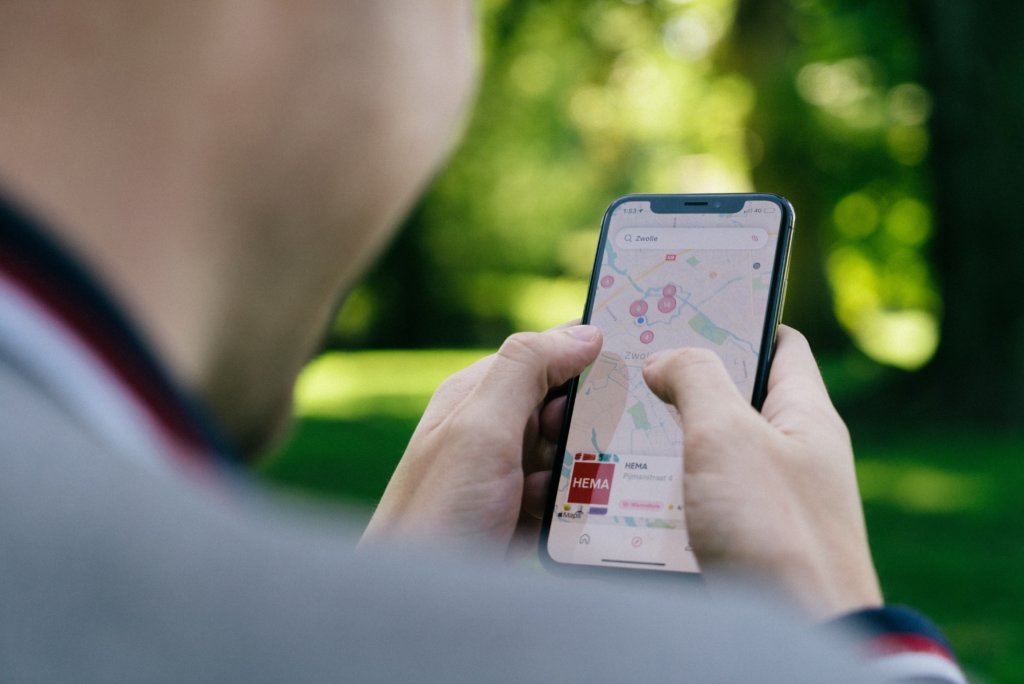SEO for Local Businesses
Local SEO is the process of optimizing a website for local search engines.
More and more people utilize their mobile phones to search for businesses and services in their local area.
As a business owner, it’s essential to ensure your website is optimized for local SEO so that these customers can find you. After all, potential customers searching for businesses in their area are more likely than others to make a purchase.

You can do a lot of things to optimize your website for local SEO:
1. Make sure your website is mobile-friendly.
2. Claim, verify and optimize your Google My Business listing.
3. Build local citations.
1. Checklist for Local SEO Optimization
This checklist is a list of local SEO essentials that will assist you in improving the searchability and ranking of your business website in local search results.
a. Physical address in the search metropolis
Anyone who has tried searching for a local business online knows that location is everything.
If your business doesn’t show up in the search results for your city, you’re missing out on many potential customers. That’s why ensuring your website is optimized for local search is essential.
Here’s a checklist to help you get started:
1. Make sure your physical address is listed prominently on your website. Customers need to be able to see it at a glance, so don’t bury it in the footer or contact page.
2. Include keyword-rich titles and descriptions of your products or services. This will help potential customers find you when they’re searching online.
3. Use geo-targeted keywords in your content. For example, if you’re a local salon in Los Angeles, include that in your web copy, blog posts, and social media profiles.
4. List your business on the directory and review sites like Yelp, Google Places, and Angie’s List. When looking for local companies, customers often turn to these sites, so it’s vital to be listed there.
By following these simple tips, you can ensure your business is visible to potential customers in your local area.
b. Appropriate classification affiliations
Check that your site is correctly categorized on Google and other local search engines, especially if you’re new to SEO. This will help ensure that your site is properly indexed and ranked for local search keywords.
If you are a hair salon, for example, some appropriate classification affiliations would be:
• Hair Stylists
• Beauty Salons
• Barber Shops
• Day Spas
• Nail Salons
• Tanning Salons
Including these affiliations on your website helps Google and other search engines understand your business and how to categorize it for local search properly.
c. Consistency of structured citations
Ensure your NAP (name, address, phone number) is consistent across the web. The information should always be the same whenever your business is mentioned on a website or a page.
Inconsistent citations can confuse potential customers and hurt your chances of being found online. So take the time to clean up any old sources and ensure your NAP is correct on all your current listings.
d. High-quality references are more important than ever.
Mentions, backlinks, and citations are great, but they’re not all created equal. The quality of your sources matters just as much as the quantity.
Look for citations from high-quality, authoritative websites in your industry. These will carry more weight with search engines and help your business rank higher in local search results.
Landing page URL’s authority and trustworthiness
These are two primary ranking factors. The more trustworthy and authoritative your site is the higher your ranking in search engine results pages (SERPs).
There are many ways to increase your site’s authority and trustworthiness. One way is to get high-quality backlinks from other websites. Backlinks are links from other sites that point to your site. The more high-quality backlinks you have, the higher your site will rank.
Another way to increase your site’s authority is to create great content that people will want to link to. This will help your website position better, and it will also help you attract more traffic.
Other websites will likely link to it if you can create valuable and informative content.
Input your state and city in every website title tag.
A straightforward way to improve your local SEO is to include your city and state in your website’s title tags. This method helps search engines understand your business and makes it easier to find your site when people search for local companies.
For example, if you own a salon in Los Angeles, your title tag might look something like this: Salon Los Angeles | Best Haircuts in LA
Including your city and state in your title tag is a quick and easy way to improve your local SEO. So make sure to do it on all your website’s pages.
e. Using your local area code in your primary number
If you want to go higher in local search results, ensure your website’s primary phone number includes your area code.
This helps search engines understand where your business is located and makes it easier to find your site when people search for local companies.
From the examples above, if you own a salon in Los Angeles, your phone number might look like this: (323) 555-1234. Including your area code in your primary phone number is a quick and easy way to improve your local SEO.
So make sure to do it on your website’s contact page or any other page that contains your contact information.
f. An abundance of mentions or references from industry-relevant websites
If other industry-relevant websites in your industry are talking about you, that’s a good sign.
It means you’re doing something right and that other see you as an authority in your field. These mentions will help you rank higher on search engine results pages (SERPs).
There are a few ways to get other websites to mention you. One way is to guest post on other blogs. This will allow you to showcase your expertise and get your name out there.
g. The closeness of your local business address from the client’s search (The distance between a searcher and the business they are looking for)
The closer your business is to the person searching, the more likely you’ll appear in their search results. This is because Google gives preference to businesses closer to the searcher.
If you aim to improve your chances of showing up in local search results, ensuring your complete address is reflected on your pages and websites will do the job, but you need to note that the search’s proximity is beyond our control.
h. An abundance of mentions or references from relevant local websites
As per above, it’s a good indication if other local businesses are talking about you. It implies that you’re doing something correctly, suggesting that people in your region notice you as an authority in your field.
The more relevant local authorities you can tap and network too, the more chances of them talking about you and looking up to you as an expert in your niche.
i. Ensure your product keywords are in your business title
To guarantee your business appears in Local SEO results, ensure that your product keywords are included in your business title.
This tactic will assist search engines in understanding your business and make it more likely to appear in relevant results.
Remember, including your product keywords in your business title effectively improves your local SEO. So make sure to do it on your company’s web pages.
j. Verified GBP (Google Business Profile) Page
We touched upon GMB briefly above, but what is it really, and how is it important for your Local SEO ranking?
Google Business Profile is an online application that helps businesses to manage their online presence across Google, including Search and Maps.
Claiming and verifying your GMB listing is essential because it helps you control the information possible customers see when they find your business on Google.
It also signals to Google that your business is legitimate, which can help improve your chances of showing up in local search results.
To get started with GMB, you need to create a free listing for your business. Once you’ve completed your listing, claim it and verify it using Google’s instructions.
If you’re having trouble claiming or verifying your listing, several online resources can help, including this one from Google itself.
2. Google Maps
Google Maps is an online service developed by Google. It offers street maps, satellite imagery, street view, real-time traffic conditions, and transit directions. It also provides driving directions and trip planning.
Google first launched the web mapping service in February 2005. Google Maps is available on desktop computers and mobile devices for Android and iOS devices.
With Google Maps, you can find businesses and get driving directions. So how do you apply it to your local SEO?
When you search for a business on Google, you’ll often see a map with that business’s location. This is because Google Maps is integrated with the Google search engine.
If you want your business to show up in Google Maps, you must ensure that your business is correctly listed on Google. There are two ways to do this:
1) You can add your business to Google Maps yourself.
2) You can hire a local SEO company to do it for you. Yep, it can be us 😉
a. Combat GMB spam on Google map
If you suddenly find that your business is no longer appearing in the map pack, it could be because someone has submitted spammy information about your business to Google.
This is a common tactic used by local SEO scammers, and it can be challenging to remove the false information yourself.
The best way to fight back is to hire a local SEO company to help remove the fraudulent listings and get your business back on track.
These factors include the business’s location, distance from the searcher, and relevancy
to the search query.
b. Examining local markets and assessing the market
A market analysis is a detailed assessment of a particular market. It is used to understand the current opportunities and threats that exist in a market and gauge the potential of that market.
A market analysis can be a valuable tool for businesses to consider entering a new market or expanding into new territory.
When conducting a market analysis, businesses should consider both the macro and micro factors that will affect their business. Macro factors pertain to the overall market, while micro factors are specific to the industry.
Some of the macro factors that you should consider in a market analysis include:
• The size of the market
• The growth rate of the market
• The demographics of the market
• The competition in the market
• The economic conditions of the market
Some of the micro factors that you should consider in a market analysis include:
• The location of the business
• The target market of the business
• The pricing of the product or service
• The branding of the business
c. Investigating On-page SEO and local business listings
This includes optimizing the website’s title, meta descriptions, and h1 tags to include relevant keywords for local searches. It also includes optimizing the website’s content to be relevant to the local area.
You can check out your competitor’s local website to see what they are doing to optimize their website for local searches.
To find your competitor’s website, simply enter their business name into a search engine and add “near me” to the end of the query. This will bring up a map of their business listings and their website.
Observe if they are doing something correctly regarding on-page SEO and see how you can improve or update your local business listing.
And no, you are not supposed to copy everything you see. You just need to investigate and apply the tactics if there are.
d. Researching and designing a reputation and reviews strategy
A good reputation can differentiate between a successful local business and one that fails. That’s why it’s so important to have a strategy for managing your business’s reputation.
Motivate your clients and patrons to leave reviews by making it easy for them. Add links to your review profiles on your website and social media profiles, and make sure your company is on popular review sites like Yelp and Google Places.
There are several ways to do this, but one of the most effective is encouraging customers to leave feedback and reviews on your business platforms.
You can do this by setting up a system where customers are prompted to leave their feedback after purchasing or using your service.
Another way to manage your business’s reputation is to respond to positive and negative reviews professionally and courteously. This tactic shows potential customers that you are interested in what they say and are willing to address any concerns they may have.
Monitor your online reputation
Keep an eye on what people are saying about your business online. You can utilize several online tools, such as Google Alerts, Mention, and Social Mention.
These tools will notify you whenever your business is mentioned online, and you can promptly reply to positive or negative reviews.
A good reputation can differentiate between a successful business and a failure. That’s why it’s so important to have a strategy for managing your business’s reputation.
e. Examining local industry content and developing a publishing approach
If you want your local company to be seen as an authority in your industry, you need to publish high-quality posts regularly so your customers know what to expect.
This content can be in a form of blog posts, articles, infographics, or even videos. To get started, look at your competitors’ publishing and see how you can improve upon it.
Is their content outdated? Are they lacking in certain areas?
Once you know what you can do better, start creating and publishing your content. Promote your content on social media and other online platforms to get maximum reach.
f. Crafting a robust local marketing strategy
A local marketing strategy is a plan of action for promoting your business in a specific geographic area. It should consider your local market’s unique needs and characteristics and include tactics for promoting your business online and offline.
Effective offline marketing tactics include print advertising, direct mail, and local events. As for online marketing, tactics like pay-per-click advertising, local SEO, and social media marketing can be helpful avenues for local SEO optimization.
g. Local search automation and analytics
Local search engine optimization is a complex and ever-changing field. It can be challenging to keep up with the latest trends and changes.
One way to stay on top is to automate your local SEO efforts. How?
Several software programs and tools can help you with tasks like keyword research, link building, and tracking your local search rankings. Additionally, analytics tools can help you track your progress and identify areas that need improvement.
Google Analytics is a free tool that provides valuable insights into your website traffic and marketing efforts.
It can show you where your website visitors are coming from, what they’re doing on your site, and how they found you. This information can refine your marketing strategy and improve your results.
Another way to stay on top of your local SEO is to track your progress and analytics. Doing this will help you identify areas that need improvement and track your progress over time. Some helpful metrics include website traffic, online reviews, and conversion rates.
3. Backlinks
Backlinks are a vital part of SEO. They measure the quality and quantity of links that point to your site. The more high-quality backlinks you have, the higher your site will rank in search engine results (SERPs).
Take note of the following when building backlinks:
1. Make sure the links are coming from high-quality websites.
2. Links should be relevant to your site’s content.
3. Avoid link farms and other low-quality websites.
4. Don’t engage in link buying or selling.
5. Monitor your backlink profile to ensure you’re not being spammed.
a. Press releases
A press release is a formal announcement sent to news media outlets. It is an effective way to promote your business and generate publicity.
Before crafting a press release, keep in mind the following:
1. A catchy headline
2. A brief description of your business
3. The release date
4. Contact information
5. A link to your website
b. News coverage
Getting your local business featured in the news is a great way to develop publicity. Here are some things you can do to increase your chances of being featured in the information:
1. Make sure your business is newsworthy.
2. Have a newsworthy story to tell.
3. Get in touch with reporters and pitch your story.
4. Follow up after you’ve made contact.
5. Monitor the news for mentions of your business.
News coverage can be an excellent boost for your business, so it’s worth pursuing.
c. Trade organizations
Another way to get your business out there locally is to join trade organizations. These groups are typically firms and companies in the same industry or geographic area.
Being a trade organization member can help you network with other businesses, stay up-to-date on industry news, and get access to exclusive events and resources.
To find trade organizations in your industry or geographic area, you can do a quick online search or check with your local chamber of commerce.
d. Community societies
Joining community organizations is another great way to promote your business locally. These groups typically focus on a specific interest or cause.
Volunteering with a community organization may help you connect with others who share your interests, stay engaged in your community, and give back to an issue or cause you are passionate about supporting.
Aside from networking, you can also get satisfaction from helping the causes your community supports. A double win, right?
e. Sponsorships / event participation
Another way to promote your business is by sponsoring local events or participating. This will help get your name out there and show you’re involved in your community.
When choosing an event to sponsor or participate in, make sure it’s relevant to your business and that you’ll be able to reach your target audience.
For example, sponsoring a Little League team or a children’s art festival would be a great way to get your local business name out there if you’re a trade that sells children’s clothes.
Joining local events is a great way to connect with your community and promote your business simultaneously.
f. .edu websites or scholarships
.edu websites are a great way to get .edu backlinks, considered high-quality links.
To create a scholarship, you will need to:
1. Choose an amount to award.
2. Write an essay prompt.
3. Create a landing page on your website to promote the scholarship.
4. Promote the scholarship on social media and other channels.
5. Select a winner and announce the results.
Creating a scholarship is an excellent approach to obtaining high-quality links from educational institutions. It’s also a perfect way to give back to your community and help students achieve their academic goals.
4. Local Travel Directories
If you’re a local business, chances are there are regional travel guides that feature businesses in your area. Getting featured in one of these guides can help you reach new customers and promote your business to a broader audience.
To get featured in a local travel guide, you can:
1. Contact the publication directly and inquire about advertising or being featured in their guide.
2. Search for local travel guides online and submit your business information.
3. Ask your local chamber of commerce or tourism board to see if they have a directory of local businesses.
4. Ask your customers if they know local travel guides that feature businesses like yours.
Final Thoughts
As you can see, optimizing your website and local business listings for search engines is a complex process that takes time and effort. However, the results can be well worth it.
By taking advantage of the tips we’ve shared in this post and working with an experienced SEO professional, your business can rank higher in local search engine results pages (SERPs) and attract more customers.
No time to do all the tactics above? We can help!
Book a FREE strategy call with us now, and we will help you get your business out there.
About The Author
Rehj
With over 15 years of experience in copywriting, Rehj has established a reputation as a highly skilled and talented wordsmith. Rehj has honed their craft throughout her career, consistently producing top-quality content for various audiences and industries.
Her ability to understand their target audience, craft compelling narratives, and write in a style that resonates with their audience has made them a sought-after copywriter in their field. Rehj’s passion for writing and commitment to producing top-notch content has driven their success and established them as a trusted voice in copywriting.











